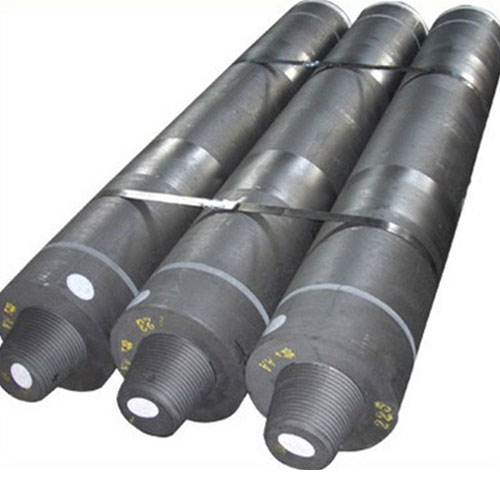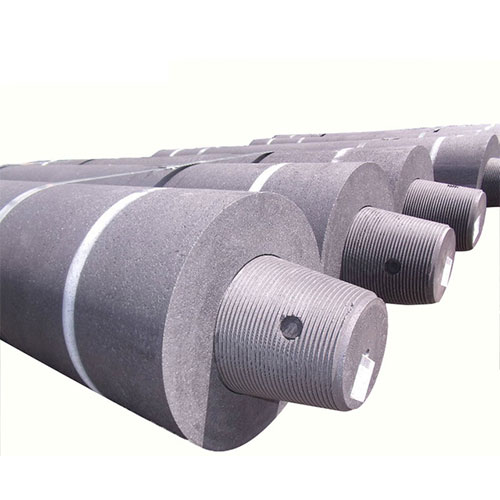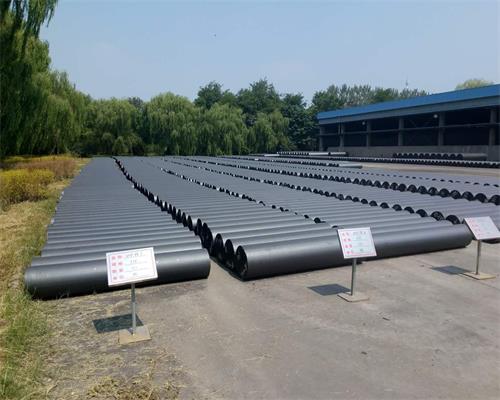What are the Raw Materials Used for Graphite Electrode?
In Graphite Electrode, the commonly used raw materials can be divided into solid carbon raw materials and binders and impregnants. Solid carbon raw materials include petroleum coke, pitch coke, metallurgical coke, anthracite, natural graphite and graphite crushed, etc.; binders and impregnants include coal tar pitch, coal tar, anthracene oil and synthetic resins. In addition, some auxiliary materials are used in production, such as quartz sand, metallurgical coke particles and coke powder. The production of some special carbon and graphite products (such as carbon fiber, activated carbon, pyrolysis carbon and pyrolysis graphite, glass charcoal) uses other special raw materials.

What is Calcination? Which Raw Materials Need to be Calcined?
The process of high-temperature (1200-1500℃) heat treatment of carbonaceous raw materials in isolation of air is called calcination. Calcining is the first heat treatment process in carbon production. Calcining causes a series of changes in the structure and physical and chemical properties of various carbon raw materials.
Both anthracite and petroleum coke contain a certain amount of volatile matter and need to be calcined. The coking temperature of pitch coke and metallurgical coke is relatively high (above 1000℃), which is equivalent to the temperature of the calciner in the carbon plant. It can no longer be calcined and only needs to be dried. But if pitch coke and petroleum coke are mixed and used before calcination, they should be sent to the calciner together with petroleum coke for calcination. Natural graphite and carbon black do not need to be calcined.

Forming: What is the Principle of Extrusion?
The essence of the extrusion process is to make the paste pass through a certain shape of die mouth under pressure, and be compacted and plastically deformed to become a blank with a certain shape and size. The extrusion molding process is mainly the plastic deformation process of the paste.
The paste extrusion process is carried out in the material chamber (or paste cylinder) and the arc-shaped nozzle. The hot paste filled into the chamber is pushed by the main plunger at the rear. The gas in the paste is forced to be continuously removed, the paste is continuously dense, and the paste moves forward at the same time. When the paste is moving in the cylindrical part of the material chamber, the paste can be regarded as a stable flow, and each particle layer basically moves in parallel. When the paste enters the part of the extrusion nozzle with circular arc deformation, the paste close to the wall of the mouth is subject to greater frictional resistance as it advances, the material layer begins to bend, and the inside of the paste produces different advancing speeds, and the inner layer of paste The advancement of the material leads to uneven density of the product along the radial direction. Therefore, the internal stress caused by the different flow rates of the inner and outer layers is generated in the extrusion block. Finally, the paste enters the linear deformation part and is extruded.
Roasting: What is Roasting? What is the Purpose of Roasting?

Roasting is a heat treatment process in which the pressed raw product is heated at a certain heating rate in the protective medium in the heating furnace under the condition of isolating the air.
The purpose of roasting is:
(1) Eliminate volatile matter Products that use coal pitch as a binder generally emit about 10% of volatile matter after roasting. Therefore, the firing yield is generally below 90%.
(2) Binder coking The raw products are roasted according to certain process conditions to make the binder coking, forming a coke network between the aggregate particles, and firmly linking all aggregates of different sizes together, so that the product has a certain degree of Physical and chemical properties. Under the same conditions, the higher the coking rate, the better the quality. Generally, the coking residue rate of medium temperature pitch is about 50%.
(3) Fixed geometric form The raw product softens and the binder migrates during the firing process. As the temperature rises, a coking net is formed, which makes the product rigid. Therefore, as the temperature increases, its shape does not change.
(4) Reducing resistivity During the roasting process, due to the elimination of volatiles, the pitch coking forms a coke grid, the pitch decomposes and polymerizes, and a large hexagonal carbon ring plane net is formed, and the resistivity drops significantly. The resistivity of the raw product is about 10000×10-6Ω·m, and it is reduced to 40-50×10-6Ω·m after firing, which is called a good conductor
(5) Further volume shrinkage After firing, the diameter of the product shrinks by about 1%, the length shrinks by about 2%, and the volume shrinks by 2-3%.
Why impregnate carbon products?
The porosity of the green product after compression molding is very low. However, after the raw product is roasted, part of the coal pitch decomposes into gas and escapes during the roasting process, and the other part is coked into pitch coke. The volume of pitch coke produced is much smaller than the original volume of coal tar pitch. Although it shrinks slightly during the roasting process, many irregular and small pores with different pore sizes are still formed inside the product. For example, the total porosity of graphitized products is generally 25-32%, and the total porosity of carbon products is generally 16-25%. The existence of a large number of pores will inevitably have a certain impact on the physical and chemical properties of the product. Generally speaking, as the porosity of graphitized products increases, its bulk density decreases, resistivity increases, mechanical strength decreases, oxidation speed increases at a certain temperature, corrosion resistance also deteriorates, and gas and liquid are more easily permeated.
Impregnation is a process that reduces the porosity of the product, increases the density, increases the compressive strength, reduces the resistivity of the finished product, and changes the physical and chemical properties of the product.
Graphitization: What is graphitization? What is the purpose of graphitization?
Graphitization is a high-temperature heat treatment in which the calcined product is heated to a high temperature in the protective medium of the graphitization furnace, so that the hexagonal carbon atom plane grid is transformed from the disorderly overlap in the two-dimensional space to the ordered overlap in the three-dimensional space, and has a graphite structure. process.
(1) Improve the thermal and electrical conductivity of the product.
(2) Improve the thermal shock resistance and chemical stability of the product.
(3) Improve the lubricity and abrasion resistance of the product.
(4) Eliminate impurities and improve product strength.
Mechanical processing: Why do carbon products need to be mechanically processed?
(1) The need for plastic surgery
The pressed carbon product with a certain size and shape undergoes varying degrees of deformation and damage during the roasting and graphitization process. At the same time, some fillers are adhered to the surface. It cannot be used without mechanical processing. Therefore, the product must be reshaped and processed into a specified geometric shape.
(2) Need for use
According to the user's requirements for processing. For example, the graphite electrodes of electric furnace steelmaking need to be connected and used, and threaded holes must be made at both ends of the product, and then the two electrodes must be connected with a special threaded joint.
(3) Process requirements
Some products need to be processed into special shapes and specifications according to the user's technical requirements, and even require lower surface roughness.




